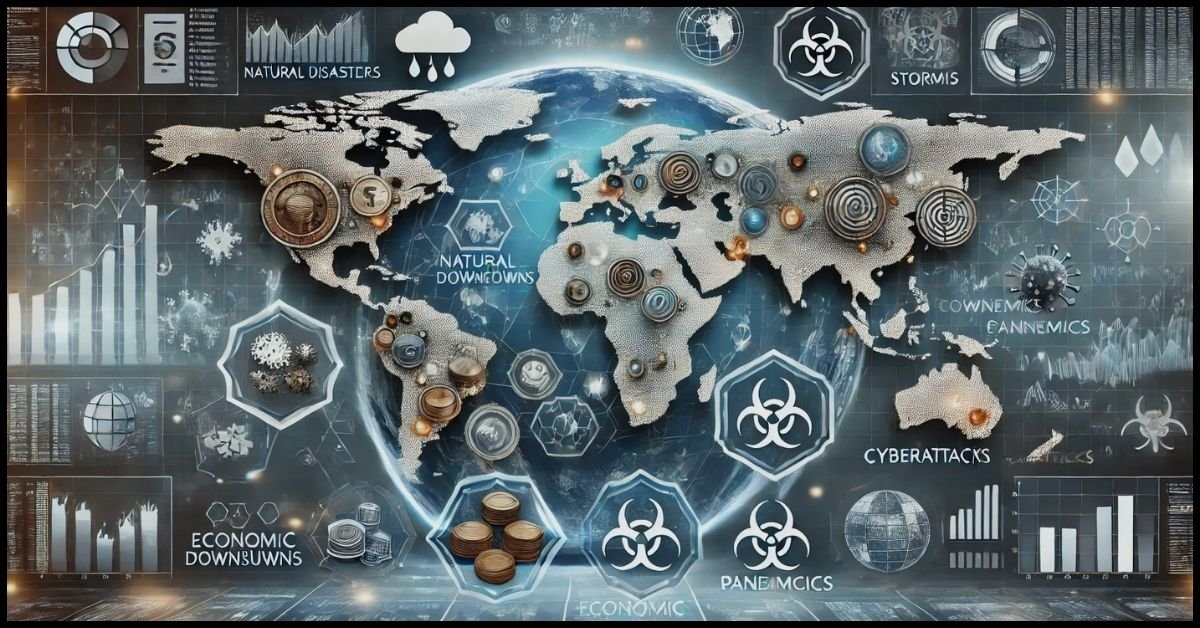Introduction to https://finanzasdomesticas.com/principales-riesgos-mundiales-2021/
The principal riesgos mundiales 2021 (main global risks of 2021) are issues that governments and organizations have to address, as well as problems that have global implications and influence international relations, economies, and the environment. This article will explore the top global risks that have shaped our world in 2021, providing a comprehensive overview of their causes, effects, and potential solutions. Understanding these risks is critical for navigating the uncertain future ahead.
Health Crises: A Continued Legacy of COVID-19
1 The Ongoing Impact of COVID-19
The COVID-19 pandemic continued to be one of the most significant risks in 2021. The emergence of new variants, such as the Delta and Omicron, posed health risks that were even more difficult to control. The pandemic disrupted global supply chains, strained healthcare systems, and led to extensive economic consequences worldwide.
2 Lessons from the Pandemic
What can we learn from the health crisis that defined 2020 and 2021? Countries and organizations worldwide must now prioritize public health infrastructure, vaccine accessibility, and preparedness for future global health crises. The rise of telemedicine, AI in healthcare, and digital health innovations can also provide long-term solutions to mitigate similar risks.
Geopolitical Risks: Global Tensions and Instability
1 The Threat of Military Conflict
Political instability in various regions, particularly in the Middle East and East Asia, heightened geopolitical risks. The U.S. withdrawal from Afghanistan in 2021 further complicated the global security landscape, as it shifted the balance of power in the region and potentially encouraged terrorist organizations to reassert their presence.
2 Cybersecurity in a Volatile World
In 2021, cybersecurity also emerged as a critical geopolitical risk, with attacks on governments, corporations, and critical infrastructure escalating. The increasing reliance on digital systems has made societies more vulnerable to cyberattacks, creating uncertainty and fear around digital safety.
Climate Change: A Global Environmental Threat
1 The Growing Climate Crisis
Another global risk in 2021 was the growing urgency of addressing climate change. Extreme weather events, such as hurricanes, floods, wildfires, and heatwaves, intensified worldwide, disrupting lives and economies. Governments faced the challenge of balancing economic development with sustainability.
2 The Role of Green Technologies
The push for green technologies and sustainable energy solutions was more important than ever. Nations were pressed to meet their climate goals, leading to a surge in investments in renewable energy, electric vehicles, and carbon-reducing technologies.
Economic Uncertainty: Global Financial Risks
1 The Economic Fallout from the Pandemic
The economic risks associated with the pandemic were felt globally. Governments had to spend enormous amounts to keep their economies afloat, but the long-term financial implications, such as inflation, unemployment, and mounting national debts, were areas of concern in 2021.
2 Inflation and Supply Chain Disruptions
The rise of inflation was a critical issue as economies began to reopen. The persistent supply chain disruptions and labour shortages led to product scarcity and price hikes, further destabilizing the global economy.
3 The Future of Work and Automation
The future of work was also disrupted, with increased automation and the rise of remote work changing labour markets. These trends raised concerns about job displacement and the future stability of economies, especially in developing countries.
Social Inequalities: Widening Gaps Amid Global Crises
1 Impact of Inequality on Society
Social inequality became even more pronounced during the pandemic. Access to healthcare, education, and employment opportunities were drastically affected by both the health crisis and economic downturn, disproportionately impacting marginalized communities worldwide.
2 Strategies for Social Equity
Addressing social inequalities after 2021’s global risks involves fostering inclusivity and ensuring that economic recovery plans prioritize vulnerable populations. Governments and businesses must adopt social responsibility measures promoting equity and fair resource access.
Technological Risks: The Double-Edged Sword
1 The Growing Influence of Artificial Intelligence
While artificial intelligence (AI) and other advanced technologies offer substantial opportunities, they also introduce new technological risks. From data privacy issues to AI ethics, the rapid development of these technologies demands greater oversight and regulation.
2 Automation and Job Displacement
Automation presents challenges in labour displacement, requiring reskilling and upskilling initiatives to prepare workers for new roles. As industries adopt more automation, job displacement and the future of employment remain ongoing concerns.
Conclusion: Mitigating Global Risks and Preparing for the Future
The principales riesgos mundiales 2021 have revealed how interconnected the world is and how risks in one area can cascade across the globe. Whether related to health, geopolitics, the economy, or the environment, these risks emphasize the need for global cooperation, innovation, and preparedness. By learning from these challenges, humanity can create a more resilient and sustainable future.
FAQs: Understanding Global Risks in 2021
What were the principales riesgos mundiales 2021?
In 2021, the principales riesgos mundiales (main global risks) included the ongoing COVID-19 pandemic, geopolitical tensions, climate change, economic uncertainty, social inequality, and technological disruptions.
How did the COVID-19 pandemic impact the world in 2021?
The pandemic continued to disrupt economies, public health systems, and daily life. New variants emerged, prolonging the crisis and complicating virus control efforts. The long-term consequences included widespread economic hardship and increased social inequalities.
Why is cybersecurity a major global risk?
With more critical systems and data shifting online, cybersecurity has become essential to protecting governments, businesses, and individuals from digital threats. Cyberattacks can disrupt national security, economies, and critical infrastructure.
How does climate change contribute to global risks?
Climate change presents environmental risks, such as extreme weather events, rising sea levels, and biodiversity loss, which disrupt ecosystems and economies. Tackling climate change is crucial for ensuring global stability.
What are the economic risks associated with inflation?
Rising inflation can lead to increased costs of living, supply chain disruptions, and reduced purchasing power, causing economic instability. Addressing inflation is key to achieving a stable post-pandemic economic recovery.
How can we address social inequalities in the wake of global crises?
Addressing social inequalities requires inclusive policies ensuring equal healthcare, education, and employment opportunities. Governments and businesses must collaborate to create a fairer, more equitable society.
Final Thoughts
This article has provided a comprehensive overview of the principales riesgos mundiales 2021, highlighting the key global risks that shaped the year. From health crises to economic uncertainty, the world has faced numerous challenges that require immediate attention and long-term solutions. We can better prepare for the future and build a more resilient world by understanding these risks.

Zoe Rae is a dynamic writer at SpinUpBusiness.com, where she covers a broad range of topics from business strategies to lifestyle, technology, and more. With a keen eye for detail and a passion for making complex ideas simple, Zoe crafts content that informs, engages, and inspires her readers.



